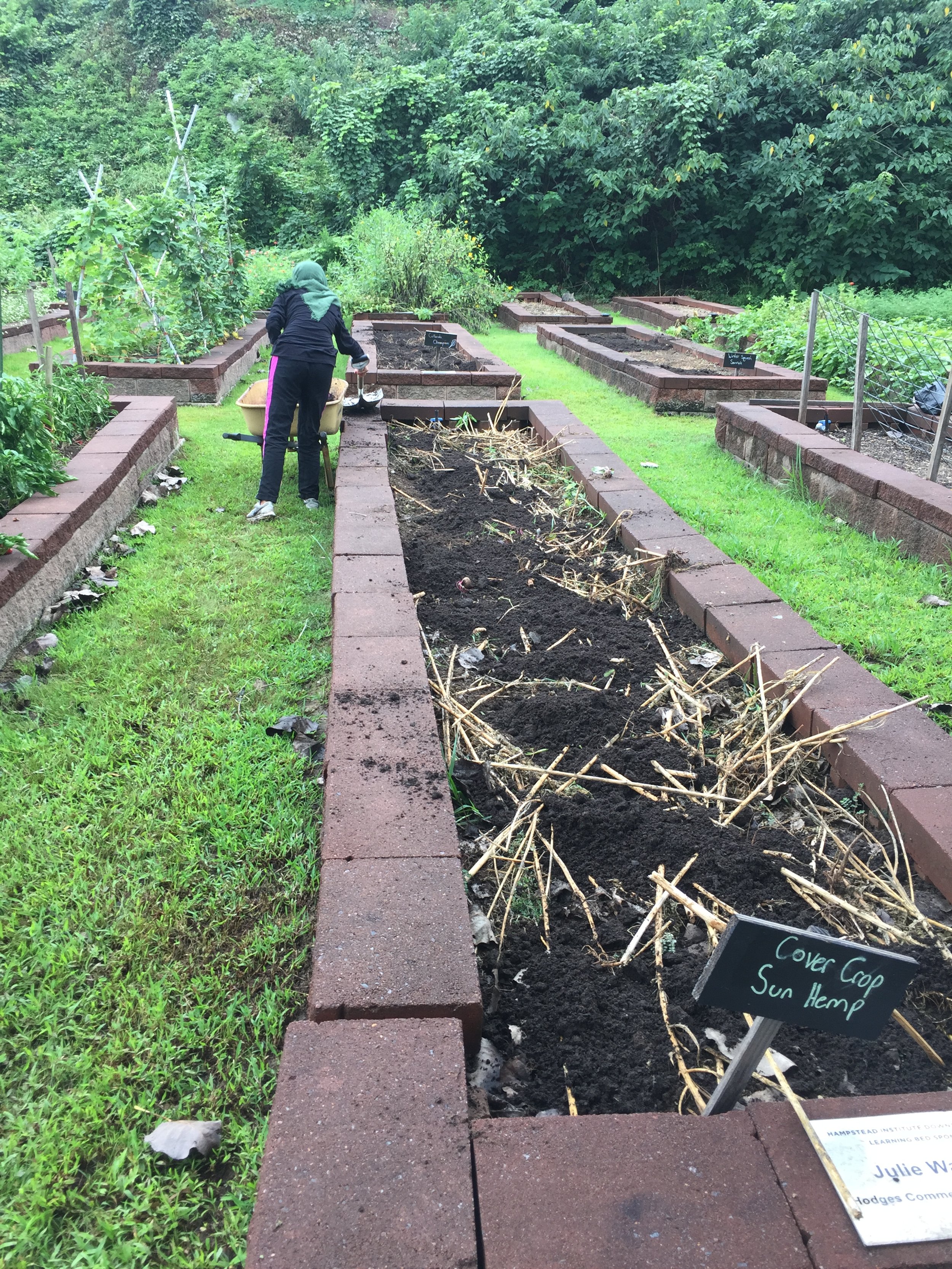IN THIS LESSON
Gardening with Nature - Idea 1 – Healthy soil equals healthy gardens
Soil is more than dirt. It’s a whole living world full of bacteria, fungi, insects, earthworms. Healthy life below ground means healthy plants above ground. Some garden plants connect with soil bacteria to get nitrogen out of the air. Fungi break down dead things into nutrients for plants. Plants form beneficial relationships with fungi to gain access to more nutrients and water.
If you are searching for more information online, you’re likely to come across the term “regenerative agriculture.” Think of it as organic plus or beyond organic. The goal of regenerative agriculture is to grow food in ways that actually improve the living conditions of all life in the garden - in the soil, above ground, in the air. The foundation of regenerative agriculture is healthy soil.
Ways to keep soil healthy
Minimize digging (disturbance) - This is the idea of “no-till” farming and gardening. If you are constantly turning over your soil, you are destroying the below ground habitat for all of the organisms that live there. You’re turning over and destroying their home. This disrupts the relationships underground that can benefit your food plants. So how do you garden without digging?
Apply mechanical tilling (rototillers, tractors) sparingly or only once. If you are starting a big garden or growing in the ground, use a tiller to help you get started, but don’t use it again. Not only does regular tilling kill beneficial soil life, regular use of a rototiller creates a hard pan, a compacted layer of soil about 4 inches below the soil surface caused by regular tilling. Rototillers can actually stop your plants from growing deep roots! Tilling and even turning over soil with a shovel brings up buried weed seeds, too, potentially increasing the amount of weeds in your garden!
Aerate your soil with digging forks (short handled forks meant for digging, not pitchforks) or broad forks. A broad forks is a tool meant to help aerate or add air channels in the soil without tilling. When you use a digging fork or broad forks, you are letting the tines on the tools open up air ways into the soil and loosen the ground. You are not turning the soil over.
Double digging is a way of creating a garden without a tiller and without turning over the soil.
Sheet mulching is another technique for establishing a garden bed without tilling. Sheet mulching builds up garden beds on top of the soil using layers of organic matter. Because of the layers, sheet mulching is sometimes called lasagna gardening.
Don’t work your soil when it is wet! If it’s rained recently, you may need to wait for your soil to dry out. Trying to till wet soil will leave you with brick-like clods instead of garden soil. How wet is too wet? This video from University of Kentucky Extension will give you a simple test to help you know if it’s too wet.
Keep to the paths - Soil compaction happens when feet, wheels, even rain on bare ground, packs soil particles closely together. Compacted soil doesn’t drain well and lacks air that soil life needs. Establish paths and teach your garden community why it’s important to not walk or stand in the garden beds.
Cover it! Use mulch or plant cover crops in places where you aren’t growing food or flowers. Keeping your soil covered in mulch or growing things keeps it from washing away or getting compacted. Cover crops help add organic matter and even nitrogen (free fertilizer!) to your garden.
Compost! Add ½ to 1 inch of compost to your garden before you plant. You can also mulch with compost. Compost is part fertilizer and part habitat for the many good things that live in the soil. These good fungi, bacteria and other creatures help break down particles in the soil into the things your plants need to grow!
-
If you really want to dig in (ha ha) to research and practical application of no till and farming with nature, Helen Atthowe’s The Ecological Farm is one our favorite books.
The Living Soil Handbook is also an excellent resource.
Farming with Soil Life is a free online book from SARE.
Check your local library for copies of these and other farm and garden books

Cardboard is a free resource and waste product that makes good temporary mulch. It can protect your soil from wind and rain in between crops, inhibits weed growth, and keeps new weed seeds from blowing into your beds.

A terminated winter cover crop covered with an half inch to inch of finished compost. Terminated means we killed the cover crop, probably by running a stirrup hoe through it or cutting it right at the soil. We left the cover crop in the bed for mulch and transplanted plants into the mulch.

Using a tiller to create a new garden space and break up very compacted soil. A more heavy duty tiller would have been a better choice for this project, but we used the machine that we had. We only used a tiller once for this new garden.

The area that was tilled planted in gourds and mulched. Note the established paths. Squashes and gourds (gourds are a kind of squash) are living mulch. Their leaves keep the soil cool & moist, shade out weeds, and protect the soil from wind and rain.